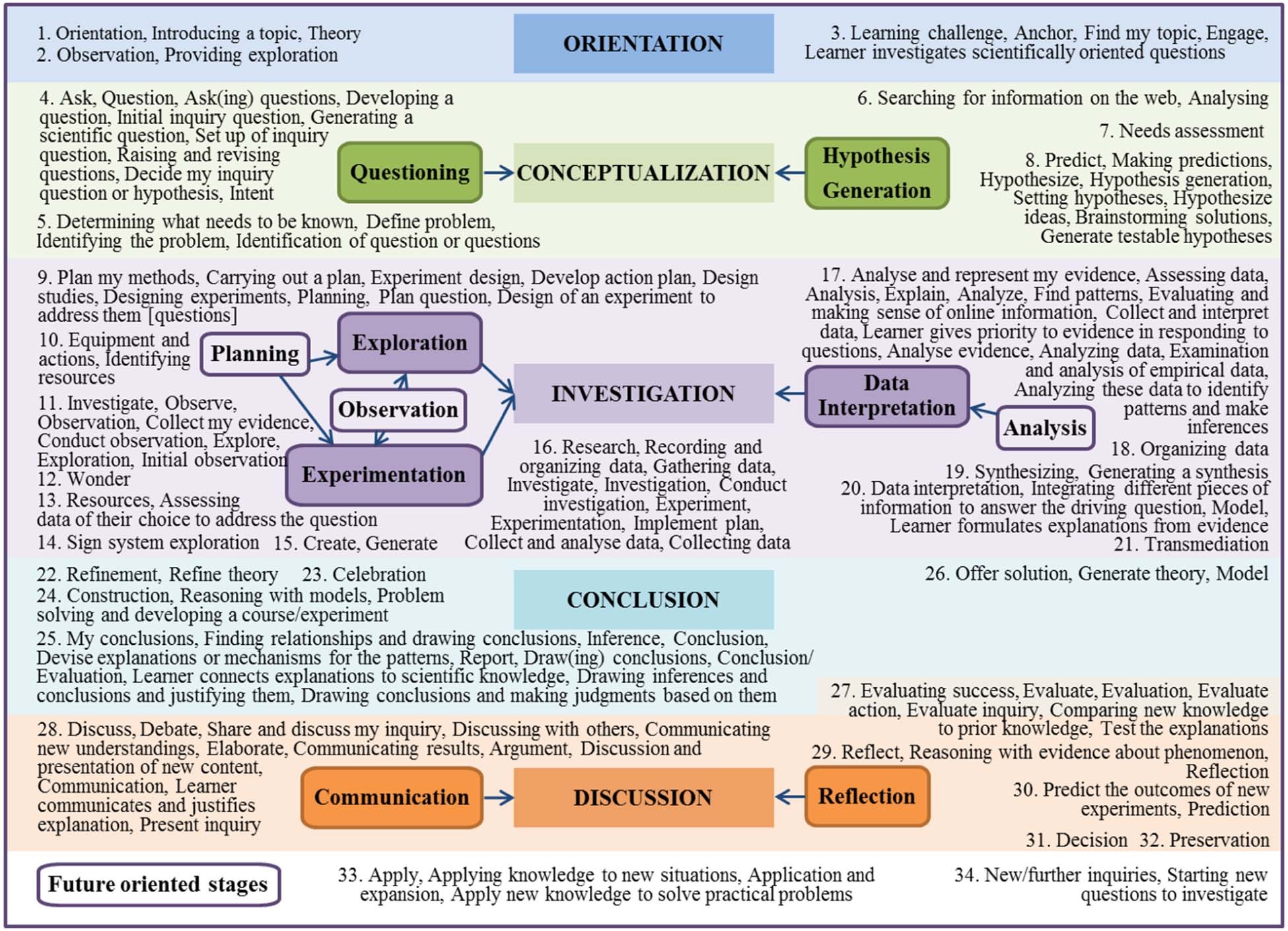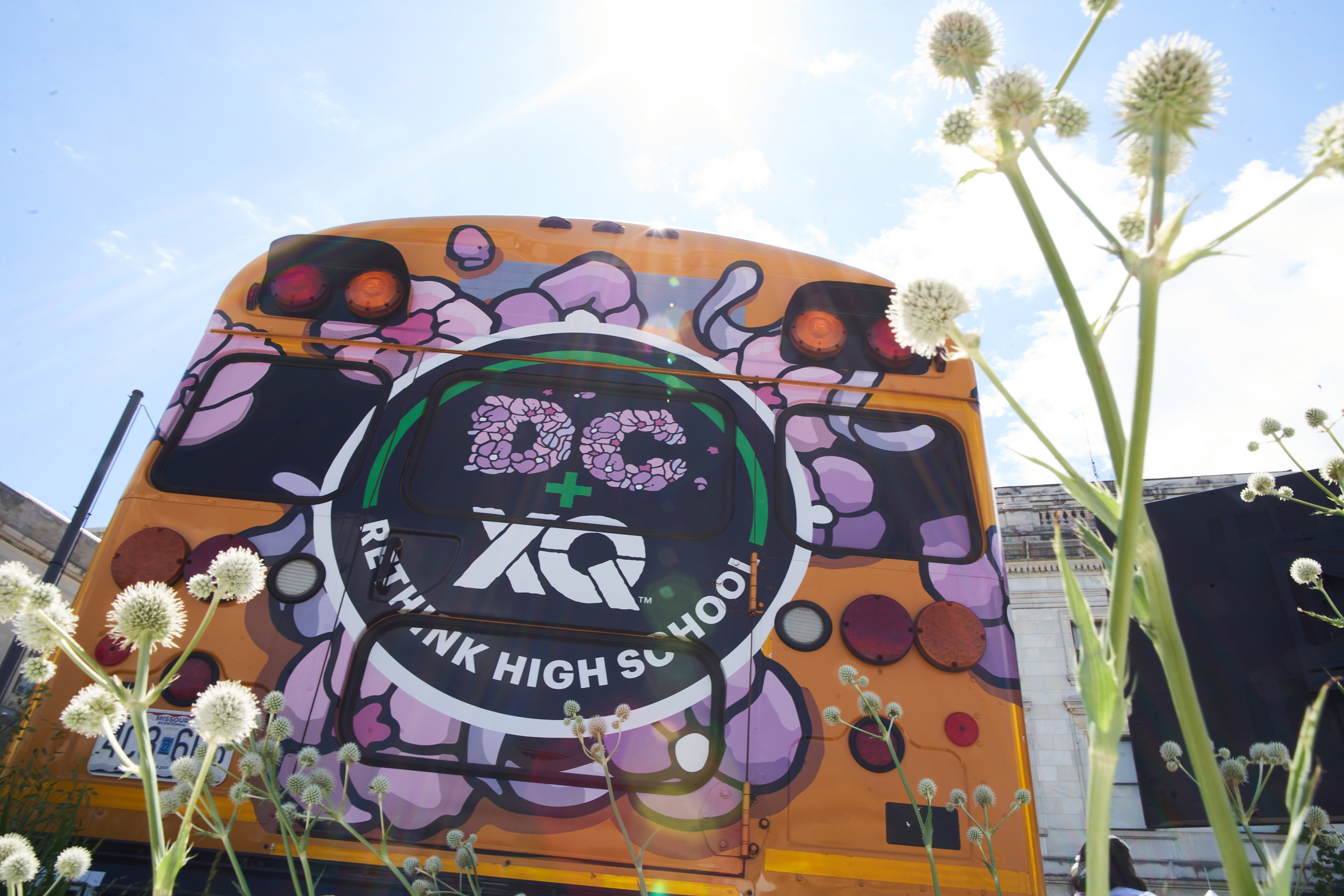What Is Inquiry-Based Learning? (IBL)
Inquiry-based Learning combines student curiosity and the scientific method to increase engagement and critical thinking. Here's how you can get started in your classroom.

Transforming high school means finding new ways to engage students in their learning. XQ’s goal is to create students with agency who are deeply engaged in their own learning and fully prepared for all that the future has to offer. (Learn more about XQ Learners.) Change begins with a set of six design principles that shape everything from school culture to curriculum to student voice and choice, all aimed at providing students opportunities for meaningful, engaged learning.
One of the best ways to ensure that kind of meaningful engagement is through inquiry-based learning. In this article, we’ll look at the benefits of inquiry-based learning, some examples of the approach in action, and show you how you can begin implementing inquiry-based learning in your classroom!
What is Inquiry-Based Learning?
As opposed to traditional classroom learning where a teacher presents facts and knowledge about a subject, “inquiry-based learning is an educational strategy in which students follow methods and practices similar to those of professional scientists in order to construct knowledge.”
But inquiry-based learning isn’t just for science class.
What Does Inquiry-Based Learning Look Like?
At Vista High School, an XQ school just outside of San Diego, students took a novel approach to studying William Golding’s literary classic Lord of the Flies.
When it came time for the 10th grade class to reflect on the chaos that ensues when a group of boys stranded on a desert island are forced to create their own society, their teacher Stuart Easton took student-driven, inquiry-based learning to the extreme.
He left the classroom.
“The best way to get into Lord of the Flies is to experience it,” Easton says. “So, I retreat for a few days.”
Mr. Easton didn’t completely abandon his students. First, he led the class in a discussion of the novel and its major themes including societal collapse, the challenge of remaining human in the face of chaotic violence, and humanity’s capacity for evil.
But then he left students to ask their own questions and to devise their own societal rules without adult supervision. He was never that far away, but enough for students to feel the independence of truly being on their own, minus of course the desert island.
The research and inquiry here are direct experiences and there are no right or wrong answers. Easton says that students not only learned the material and better understood the work of literature, but they learned how crucial it is to work together, and take ownership of their learning.
When students participate in their learning, they are more likely to retain the information, connect it to other subjects, and understand its deeper context according to XQ’s Knowledge Module, “Student Agency & Engagement.”
And Mr. Easton’s students are proof of that.
“We got to make our own story, based on what we learned, and apply it to real life,” says Deelilah Aivao, a former student in Easton’s class. “We had power over the outcome of the project. … It gave us the opportunity to do something on our own rather than being forced to do it. We learned that being stubborn can affect not only yourself, but others too. I absolutely loved this book.”
This is a powerful statement about why an inquiry-based approach is important and beneficial. Inquiry-based learning puts more power into the hands of students and allows them to take responsibility for their learning. Mr. Easton’s lesson provides anecdotal evidence that inquiry-based learning is a great way to foster meaningful, engaged learning. It’s only one of the many ways this kind of learning and teaching benefits students.
The Core Structure of Inquiry-Based Learning
Inquiry-based learning is more than just simply asking students a lot of questions. As many teachers have experienced, asking students what they are interested in can often result in the dreaded “dunno.” Inquiry-based learning is about igniting curiosity and a hunger for answers.
Although teachers can approach inquiry-based instruction in a variety of ways, researchers have identified a few of the core phases of inquiry-based learning.
| ESSENTIAL COMPONENTS OF INQUIRY-BASED LEARNING | DESCRIPTION |
| 1. Orientation/Observation | The teacher introduces a new topic or concept. Students explore the topic through research, direct instruction, and hands-on activities. |
| 2. Question/Conceptualize | Students develop questions related to the topic, make predictions, and hypothesize. |
| 3. Investigation | This is the lengthiest part of inquiry learning. Students take the initiative, with appropriate teacher support, to discover answers, to find evidence to support or disprove hypotheses, and to conduct research. |
| 4. Conclusion | Having collected information and data, students develop conclusions and answers to their questions. They determine if their ideas or hypotheses prove correct or have flaws. This may lead to more questions. |
| 5. Discussion/Sharing | All students can learn from each other at this point by presenting results. The teacher should guide discussions, encouraging debate, more questions, and reflection. |
SOURCE: PHASES OF INQUIRY-BASED LEARNING: DEFINITIONS AND THE INQUIRY CYCLE
The Benefits of Inquiry-Based Learning
Improved student engagement: Inquiry-based learning is about students taking charge of asking the questions they want to explore. That requires meaningful participation from students along with teacher support, all of which promotes student engagement, and research shows several positive outcomes from improved student engagement at the high school level, including:
- Students are more likely to finish high school
- Students perform better on standardized tests
- Engaged students are more emotionally, behaviorally, and intellectually invested in their own learning
Greater student mastery: When students explore and discover rather than only listen to lectures, they develop greater mastery of skills and concepts. For example, a teacher can show students an algorithm for solving an algebra equation, but real mastery occurs when students are asked to develop their own. Although this might take more time, it deepens understanding of a concept.
Improved knowledge retention: Mastering and learning new things in the classroom is essential, but students must be able to recall that information later. Research has shown that many of the elements of inquiry-based lessons promote greater retention of what students learn. In one study, researchers testing biology and physics with ninth graders before and after inquiry-based lessons showed students retained greater knowledge, even 12 weeks later.
Deeper understanding of students: Allowing students to take center stage in a lesson gives teachers the valuable opportunity to observe. For example, a math teacher might demonstrate how to solve a problem in a traditional lesson, but during an inquiry-based lesson the teacher can see how each student views a problem and the steps they take to get a solution in their own unique way. Teachers are then able to gain a deeper understanding of how their students think and learn.
Inquiry Begins with the Teacher
Students own a great deal of responsibility for learning during inquiry-based lessons, but teachers are still crucial guides for making sure that learning takes place. The role teachers play in inquiry-based learning encompasses several factors:
- Teachers begin the inquiry process by introducing topics and encouraging questioning and modeling what it looks like to be curious.
- They promote and guide focused dialogue and discussion among students attempting to answer their questions.
- The teacher leads students between small-group and whole-classroom discussions. They determine the transition.
- Teachers pay attention to discussions and clarify misconceptions. They add information to further develop students’ understanding of the material.
- They bring student experiences into the discussion to make learning more relevant.
The amount of guidance and leading a teacher provides may vary. Teachers are able to make changes on the fly to adapt to particular lessons and concepts. Additionally, by knowing how their students respond teachers can create truly engaging learning experiences.
Here’s a helpful rubric from the Harvard Graduate School of Education’s Project Zero to help gauge how you’re using inquiry-based instruction in your classroom.

Four Models of Inquiry-Based Learning
Just like you would never toss a beginning swimmer into the deep end of the pool, teachers need to guide their students towards increased agency.
“Perhaps one of the greatest mistakes the inquiry teacher can make is to give too much agency over learning to learners too soon,” writes Trevor MacKenzie, an award-winning English teacher and instructional coach focused on inquiry and technology.
Here are four models to introduce inquiry-based learning in your classroom, providing a scaffolded approach to ensure successful student choice and freedom:
- Structured Inquiry. Students follow the lead of the teacher, who introduces an essential question and then guides students through specific activities, resources, and assessments.
- Controlled Inquiry: Students explore one question from several different questions generated by the teacher using a selection of resources curated by the teacher.
- Guided Inquiry: The teacher introduces topics and students begin to formulate their own questions as well as select their own resources to research their answers.
- Free Inquiry: Students, with the support of their teacher, design their own questions, select their own resources, and customize their own summative assessments to demonstrate what they learned.
Tips for Teachers Implementing Inquiry-Based Learning
Want to begin experimenting with an inquiry-based approach in your classroom? Here’s a helpful framework and some examples of how XQ schools put these ideas into action. If inquiry learning is new to you, these tips may help. You can expand on them, use them as a point of inspiration, or create your own lessons and projects.
- Resist the urge to answer all student questions. Remember that this is student-focused learning and exploration.
It’s not easy to support students in finding their passions, and it’s even harder to help them authentically pursue them. At XQ school Purdue Polytechnic High School, projects driven by student inquiry go a long way.
Colten Lewis was challenged by one of his coaches to build a hydroponic system with a team of peers. It took extensive research to learn about hydroponics, followed by the design and construction of a system that would grow produce using a water-based, nutrient-rich solution in place of soil.
The project also included ample time for students to explore the business of hydroponics, and students determined how they could use the harvest from the project to provide healthy lunches and to supply food to community members in need. In the process, Colten developed an appreciation for business and wants to be an entrepreneur and designer in the future. - Limit the time spent introducing a concept or lesson. A lecture can quickly become boring and unengaging. Provide only what students need to get started in their own exploration.
At New Harmony High, an XQ school in New Orleans, students take a class called environmental awareness. On the first day of class, their teacher, Fernando Wagner, could dive into a lecture on sustainability, local waterways, chemistry, and so much more. Instead, he asks his students a simple question: “How is a river like a hose?”
Students brainstorm, thinking about the source and flow of water and how the river is used for agriculture and other human needs. That triggers a lengthy discussion on everything from levees and water tables to sea-level rise and climate change.
“Students always ask, why do we have to do this? But at the end of the class, they always complain they don’t have enough time to answer the questions,” Wagner says. “That’s a great sign–it means they’re having fun, they want to keep going further in-depth.” - Be prepared to be flexible. Classes and students are different and require more or less guidance. Some strategies for a lesson may seem perfect when you start but fail part way through. Be willing to adapt and adjust to keep the inquiry going and engagement strong.
Project-based learning drives the curriculum at PSI High, an XQ school in Sanford, Florida. But creating authentic learning experiences through student-driven inquiry isn’t always easy.
For a recent project, students were tasked with designing a series of “micromusems” for their local history museum. Teachers planned for students to choose their own topics, communicate with the museum about exhibits, and design the structures themselves. But students were apathetic about their community.
So teachers worked with students to uncover the hidden history of Stanford, from discovering its connection with Jackie Robinson to one of the earliest incorporated Black cities in America. Students got excited to learn the history of their community that wasn’t being taught in school and the efforts of their teachers to adapt the project helped to make it a success. - Let your own curiosity unfold, too. Model lifelong learning and engagement by asking your own questions and exploring them with students. They’ll appreciate it.
Vista High School leaders and staff re-envisioned themselves as learners co-creating student experiences that are relevant, authentic, and meaningful to students’ interests and futures.
This starts with giving students a say in how—and what—they learn. In collaboration with teachers, students at Vista learn to co-create learning opportunities that connect the study of content to their emerging interests, strengths, and passions.
To support teachers in shifting from the school’s former passive style of classroom organization, the school’s leaders developed a cohort of peer-to-peer coaches who collaborate with teachers as thought partners to develop new ideas for building student voice into learning experiences. - Make time for reflection at the end of every inquiry lesson. This may be a discussion as a class or a period of quiet journaling. Reflection should include the concepts learned, but also the learning process. Ask leading questions like “How did exploration deepen your understanding?” or “Was it frustrating to not get immediate answers?”
Self-reflection is hard work, but when done effectively it’s a powerful tool for growth and improvement.
Regular reflection can help students learn, but it’s important to make it a routine habit. At Washington Leadership Academy, reflection practices are worked into the school culture to help students and teachers reach their goals, making it an expectation and not just an occasional event tacked on to learning.
Want more examples? Here are some great inquiry-based learning activities to get you started.
The Importance of Teacher Training to Inquiry-Based Learning
Inquiry is an exciting way to teach and learn. If you have never done this before, it can be intimidating. You may not know where to start or what to do next.
That’s why teacher training and professional development are so important to not only inquiry-based learning but also student success, as studies show that support for teachers and educator attitudes toward inquiry-based learning are important for student outcomes.
Schools must provide training for teachers to implement these lessons successfully. A study of teachers going through inquiry training found several important results:
- Teacher training positively impacted student engagement.
- Training also improved teacher attitude toward inquiry-based instruction.
- Having the right resources created a positive attitude toward inquiry lessons.
- Training boosted teachers’ belief in their own abilities to guide these lessons.
- Teachers still found that systemic restrictions hampered their ability to use inquiry learning. They need administrators and school culture to embrace this style of learning.
Inquiry-based learning provides so many benefits to students. Most importantly, it increases student engagement. When students are engaged, when they are empowered to guide their own learning, great things happen in classrooms and schools.
Are you hungry for more resources to help you implement inquiry-based learning in your classroom? Are you curious about how to rethink the high school experience? XQ has you covered! Subscribe to Give Me Five and get best-in-class resources curated by XQ to help you reimagine high school education in your community.









